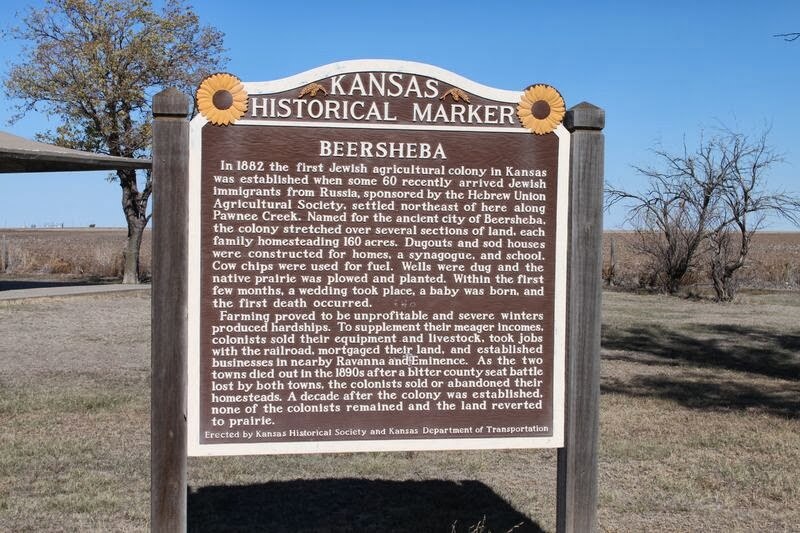The majority of the territory of what is now the state of Kansas was acquired as part of the Louisiana Purchase in 1803. The Great Plains was the home of seven Native American tribes. The first white settlement, Fort Leavenworth, was established in 1827, but actual settlement was not permitted by the government until 1854.
The first established Jewish community was not, surprisingly, in Leavenworth. The second established community only lasted a few years, but is worthy of note because Jewish settlers came
to Kansas as full members of a larger party of German immigrants who came from Chicago to settle Eudora. Although most of the original Jewish settlers of Eudora moved to Lawrence by 1867, their presence is marked by the B’nai Israel Cemetery, which was listed on the National Registry of Historic Places in February 2013.
On January 29, 1861, Kansas became the 34th state of the United States.
Kansas appears to have appealed to numerous Jewish groups as the ideal location for the organized agricultural settlement of Eastern European Jews.
 Beersheba, Kansas, was established in 1882 with 24 Russian Jewish families under the auspices of the Hebrew Union Agricultural Society. The residents of Beersheba built their homes, synagogue and school house out of sod, which was not unusual on the prairie. Unfortunately, due to disagreements between the settlers and the Society, the community failed after less than 8 years.
Beersheba, Kansas, was established in 1882 with 24 Russian Jewish families under the auspices of the Hebrew Union Agricultural Society. The residents of Beersheba built their homes, synagogue and school house out of sod, which was not unusual on the prairie. Unfortunately, due to disagreements between the settlers and the Society, the community failed after less than 8 years.
The settlements of Montifiore (1884) and Lasker (1885) both failed due to multiple years of drought. Hebron (1884) and Gilead (1886) failed to survive a series of severe winters. Touro (1886) and Leeser (1886) suffered a blizzard in their first year, a tornado in their second and a drought in their third, before both communities disbanded.
While all seven Jewish agricultural settlements had folded by 1890, Jews continued to be active contributors to the growing population of the state of Kansas.
Copyright © 2014 NJOP. All rights reserved.
 Print This Page
Print This Page